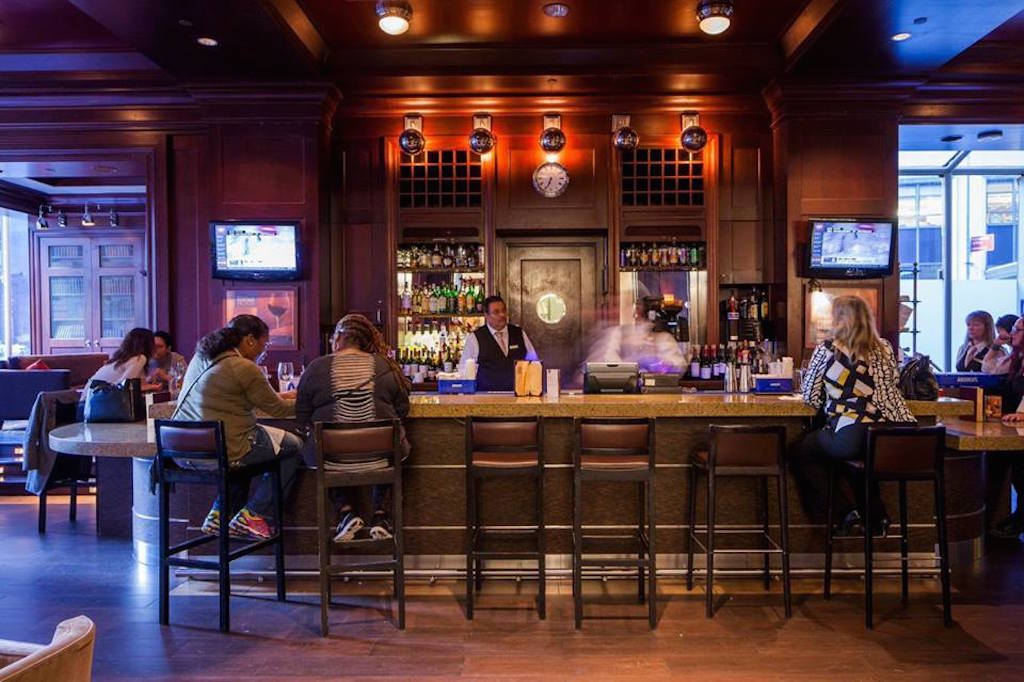Starwood Still in Play as Strategic Review and CEO Search Drag On

Skift Take
Starwood’s financial performance in the second quarter, when it detailed progress on several key fronts including asset sales and hotel-pipeline growth, has apparently not slowed its search for a permanent CEO and the hotel chain’s consideration of strategic and financial alternatives.
In response to speculation that Starwood’s review of strategic and financial alternatives had been completed in light of improved performance or other factors, a Starwood spokesperson told Skift yesterday: “Both Starwood’s CEO search and review of strategic and financial alternatives are ongoing. The board has made no decisions and all options are still on the table.”
This potential Starwood reboot dates at least to February 17 when the company stunned the hotel industry and Wall Street with the resignation of CEO Frits van Paasschen. A little more than two months later, on April 29, Starwood, which has 10 brands ranging from its bedrock Sheraton brand to the W, Aloft and Le Meridien, announced that it had hired a banker to mull strategic and financial alternatives.
Adam Aron, a Starwood board member since 2006 and previously CEO of Vail Resorts, Norwegian Cruise Line, and the Philadelphia 76ers basketball team, has been filling in as interim CEO since van Paasschen’s departure. Aron has been referred to in Starwood press releases as both “interim CEO” and “CEO,” but in recent months the “interim” returned.
Nonetheless, Aron made significant changes at the top in May. Paul James departed from his role overseeing St. Regis, W, and the Luxury Collection, and responsibility was turned over to individual brand leaders. Two were internal promotions while St. Regis went to the former COO of Trump Hotels.
One financial analyst, who declined to be identified, says Starwood has reported significant progress in the second quarter in two areas where van Paasschen apparently fell short and likely triggered his departure: asset sales and pipeline growth.
Starwood is executing now and returning shareholder value, the analyst says, adding: “They are basically doing everything right.”
To say that Starwood turned things around on a dime, however, or has done enough to convince Wall Street that everything is on track might be premature. Although there was a degree of stagnation in 2014 it would be unfair to pin this all on then-CEO van Paasschen because the asset sales and signings had to be in the works during his tenure.
For example, in pursuit of its asset-light strategy, Starwood is now on pace to reach its 2013 investor day goal of $2.5 to $3 billion in asset sales by 2016.
An Improving Pipeline
Pipeline growth, meanwhile, has been accelerating after idling on a sequential basis throughout much of 2014. Starwood’s pipeline growth by number of rooms climbed from 2.9 percent year over year in the fourth quarter of 2014 to 4.8 percent in the first quarter of 2015 and 6.7 percent in the second quarter of 2015.
In fact, Starwood stated it had 500 hotels, or 112,000 rooms, in its active pipeline through the end of the second quarter of 2015, including 56 percent in the upscale and luxury sectors and 76 percent beyond North America.
For the first half of 2015, room signings were up 39 percent year over year, Starwood states.
Van Paasschen had been criticized for Starwood’s lack of penetration in the select-service arena but in Starwood’s second quarter earnings call July 30, Aron said: “Turning to the select service category, determined action has caused more than 40 percent of Starwood’s entire pipeline to come from our limited-service hotels in the upscale market segment.”
“Measured by number of hotels, Four Points now has the largest pipeline of hotels coming into our system of all 10 of Starwood’s brands, with Aloft being the second-largest brand in our pipeline,” Aron added.
Another area where Starwood has been attempting to reverse course involves Sheraton, which makes up about 40 percent of Starwood’s overall business. After Aron admitted in April that Sheraton was basically a tired brand with uneven service levels, Starwood launched a Sheraton turnaround plan backed supposedly by a $100 million marketing campaign. The jury is still out, of course, on how this will play out at the property level at Sheraton.
Meanwhile, Starwood has recently introduced two new brands, the premier-tier Sheraton Grand and the Tribute Portfolio, a collection of independent four-star brands. Both groups are managed by Dave Marr, who was promoted to Global Brand Leader of these two lines in the May reshuffle.
A former Sheraton general manager, who had worked for the brand for nearly two decades in New England, says many Starwood GMs liked and respected van Paasschen. They especially admired his passion for hospitality, his global marketing expertise, and his vision for the potential of technology to personalize the guest experience.
“The problem was that Starwood isn’t able to scale enough globally to deliver the back end needed to support Frits’ vision around technology,” the former general manager said. “He was too far ahead of his time.”
“Frits brought a lot of excitement to Starwood, and he was always the smartest guy in the room, so that’s why everyone admired him. But at the same time, I think there wasn’t enough focus on developing new assets, especially in North America, which in the end caused too many problems with stockholders.”
With Starwood emphasizing that its CEO search and consideration of strategic options are still very much under way, analysts state that there is a whole range of options pertaining to what happens next.
Will Adam Aron Stay or Go?
One industry insider who knows Starwood well says he believes that current interim CEO Aron really wants the permanent CEO role and that if merger options look tough right now, then the Starwood board could argue that the status quo is viable and that Aron has hit targets and deserves the job.
Would that be enough, though, and does Aron have the creativity and inspirational mettle to regain the confidence of employees, developers, partners and Wall Street?
This industry insider also cautions that observers should go beyond the mere pipeline growth numbers that Starwood has registered this year and analyze the quality of the deals as numbers alone shouldn’t tell the whole story.
“Frits wasn’t always warm and fuzzy,” the industry insider says, “but I don’t think he did a bad job. What harmed him was that he made a big bet on international and then falling currencies took hold, and he didn’t know how to build a big select-service organization.”
Wyndham, which has a lot of debt and may not be in the position to pull the trigger, and InterContinental Hotels Group, which has bowed out, were considered the most likely suitors to acquire Starwood or pick up some of the pieces. The former has picked up enough former Starwood staffers that it’s openly referred to as “Wynwood.”
In an era when the lodging industry is undergoing a substantial transformation with the introduction of sharing-economy options and a plethora of new brands, Starwood may need a dynamic CEO to reinvigorate its brands and engender confidence in its future path.
But virtually anything can still happen.
Despite Wyndham’s high debt load, one analyst argues that this doesn’t preclude a marriage based on a merger of equals.
Speaking in April, Barry Sternlicht, who founded Starwood Hotels and Resorts and served as its CEO for a decade, ending in 2005, told Bloomberg that if Starwood’s stock performance didn’t improve “then somebody can make a move on them.”
Sternlicht said an acquirer would need a huge amount of capital to purchase Starwood, arguing that leveraged buyouts or private equity transactions are not feasible.
“Today, you can see a sovereign wealth [fund] coming in and saying I just want to own this thing,” Sternlicht said. “Again, if your alternative is bonds, then everything looks yummy.”
There has been speculation that Sternlicht, the founder and CEO of Starwood Capital Group, might want back in at Starwood Hotels. “if someone said to me from sovereign wealth they’d put in $10 billion then I’d go help run it again,” he said.
That scenario doesn’t appear particularly likely at this juncture, and as Starwood Hotels states, “all options are still on the table.”
A considerable number of mid-level managers have defected to other brands given all of the uncertainty at Starwood. They aren’t sticking around for the end game.





